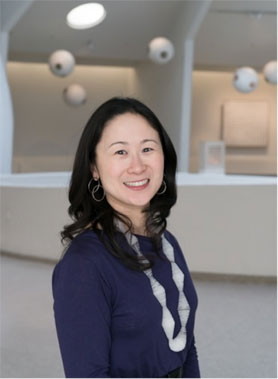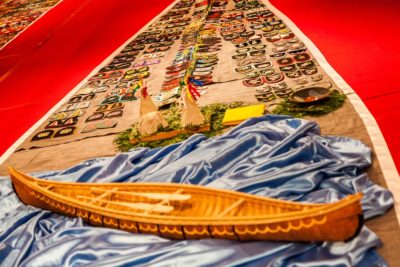FASS Blog – The Power of Public Culture by Professor Ming Tiampo (Art History)

by Ming Tiampo
Art has the capacity to make the invisible visible, the unseen seen. To change the ways that we perceive reality. To tell stories where once there were only statistics, assumptions, numbers. To bring beauty and hope to mourning.
It has been an intense and stimulating week for me, one that reminds me of what a privilege it is to be a part of a vibrant university community. Last week, I brought a class of curatorial studies students to see Walking with our Sisters at the Carleton University Art Gallery. These are students who are learning the ins and outs of museum work—in a few words, how to make culture public. Our visit began with a smudge, to cleanse our eyes, ears, hearts, and minds so that we could see, hear and feel the good in what we were about to experience. Surrounded by air heavy with sweetgrass and sage, we listened with rapt attention as Thomas, the firekeeper, told us his residential school story, and reminded us how we are all connected, settlers and indigenous peoples alike. Walking through the memorial, we were overcome by the sheer number of vamps, or moccasin tops, assembled in memory of the missing and murdered indigenous women of Canada and the US. Occasionally, there would be a photograph, or a name. We noticed the care with which each one was made, the hundreds of beads individually sewn to each vamp with love, and understood the scale of loss. Surrounded by volunteers and a steady stream of visitors, we also saw the scale of awareness and healing that the installation brought to the community, promising the possibility of change.

A few days later, I drove to the airport to pick up Dr. Kobena Mercer, a professor of the History of Art and African American studies at Yale University. Mercer had been invited as a FASS Distinguished Visiting Professor by the Centre for Transnational Cultural Analysis, a research centre that was founded by Sarah Casteel, Catherine Khordoc and me in 2005, and which we now run with Malini Guha. Over the next two days, Mercer taught an undergraduate class in African Cinema, gave a keynote lecture to a packed lecture hall at the National Gallery of Canada, and headlined an equally full to capacity workshop. Be it in his discussion of a film about French theorist Roland Barthes’ colonial roots in Côte d’Ivoire, his account of three decades of Black Diaspora visual art, or his provocations about the internationalization of art history, I began to notice a pattern. Time and again, Mercer talked about art in ways that made the invisible visible, revealing the ways in which Europe and its former colonies are inextricably intertwined; two sides of the same coin that must be considered from both perspectives. Showing stunning work by artists such as Kara Walker and Isaac Julien, which critically retold the history of black diaspora, Mercer emphasized the potential of art to create dialogue and to make change, concluding, as did Herbert Marcuse, that “the truth of art lies in its power to break the monopoly of established reality.”
Walking back into St. Patrick’s building the next morning, I once again noticed the heady smell of sage and sweetgrass, and realized that everything around me had the potential to change. Everything down to the air that we breathe.